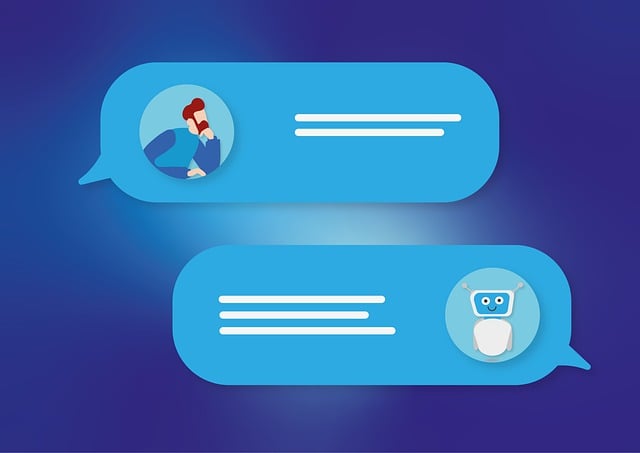AI chatbots and assistants, while revolutionizing customer service with round-the-clock support and personalization, pose significant challenges. They reflect and perpetuate biases from training data and algorithms, necessitating rigorous dataset evaluation, diverse sources, and bias mitigation. Privacy becomes a cornerstone, requiring robust measures to protect user data and maintain trust. Transparency, explainability, and user control are crucial for building trust and mitigating harm. Developers must balance innovative features with ethical boundaries, prioritize harm mitigation, and implement regular audits for responsible AI chatbot development in customer service.
In today’s digital era, AI chatbots and assistants are transforming how we interact with technology. However, their rapid development raises crucial ethical dilemmas that demand careful navigation. From understanding potential biases in AI chatbot behavior to addressing privacy concerns and ensuring transparency, each aspect of design plays a pivotal role in shaping user trust. This article delves into these key areas, exploring best practices for responsible AI assistant development and fostering ethical AI chatbot interactions in the realm of AI customer service.
- Understanding AI Chatbot Behavior and Potential Biases
- Privacy Concerns in AI Assistant Design: Protecting User Data
- Transparency and Explainability: Keeping Users Informed
- Balancing Innovation with Ethical Boundaries in AI Customer Service
- Mitigating Harm: Responsible AI Assistant Development
- Building Trust and Fostering Ethical AI Chatbot Interactions
Understanding AI Chatbot Behavior and Potential Biases

AI chatbots and assistants are designed to interact with users in natural language conversations, providing information, support, or performing tasks. However, understanding their behavior is crucial, as these systems can reflect and perpetuate biases present in their training data and algorithms. AI chatbots learn from vast datasets, often including historical text and user interactions, which may contain societal biases, stereotypes, or discriminatory language. If not carefully monitored and addressed, these biases can be reflected in the chatbot’s responses, leading to potentially harmful outcomes.
For instance, an AI customer service assistant trained on data that includes gendered or racial stereotypes might inadvertently reinforce these biases in its interactions with users. It’s essential for developers to critically evaluate training datasets, ensure diverse and representative data sources, and employ techniques to mitigate biases during development. Regular audits and user feedback loops can also help identify and rectify biases that may emerge over time.
Privacy Concerns in AI Assistant Design: Protecting User Data

In the design and development of AI chatbots and assistants for customer service roles, privacy concerns are at the forefront of ethical considerations. As these AI models rely on vast amounts of user data to learn and improve, ensuring the protection and secure handling of personal information is paramount. User data includes not only text-based interactions but also metadata, such as location, device type, and browsing history, which can all provide insights into an individual’s identity and preferences.
AI customer service platforms must implement robust privacy measures to safeguard this sensitive data. Anonymization techniques, secure data storage, and transparent data-handling practices are essential to maintaining user trust. Users should also have control over their data, with options to opt-out of data collection and clear, accessible explanations of how their information is used and protected. Balancing the benefits of AI assistance with stringent privacy protocols is key to fostering a positive user experience while mitigating potential risks.
Transparency and Explainability: Keeping Users Informed

AI chatbots and assistants are rapidly transforming the way businesses interact with customers, offering 24/7 support and personalized experiences. However, this technological advancement also presents ethical dilemmas, particularly when it comes to transparency and explainability. Users have a right to understand how these AI systems make decisions and provide recommendations. In the context of AI customer service, transparency means clearly communicating the capabilities and limitations of the chatbot or assistant to users from the outset. Explainability involves providing clear, understandable explanations for any automated decisions or actions taken by the AI, ensuring users can trust and rely on the technology.
By prioritizing transparency and explainability, developers create a more trustworthy environment. Users are less likely to feel manipulated or uncertain about their interactions with AI chatbots if they are well-informed. This is crucial for maintaining user satisfaction and building long-term relationships based on honesty and clarity, ensuring that AI customer service remains an effective and ethical solution for businesses.
Balancing Innovation with Ethical Boundaries in AI Customer Service

In the pursuit of innovative AI chatbot and assistant technologies, it’s crucial to maintain a steady balance between groundbreaking features and ethical boundaries in AI customer service. As these virtual assistants become more integrated into daily life, from handling simple queries to offering personalized recommendations, developers must navigate complex ethical dilemmas. Striking a harmonious balance ensures that AI assistants enhance user experiences without infringing on privacy, exacerbating existing biases, or causing unintentional harm.
Ethical considerations are paramount when designing AI customer service. Developers must ensure transparency in how data is collected, used, and protected. Bias mitigation strategies are essential to prevent discriminatory outcomes based on race, gender, or other sensitive attributes. Additionally, maintaining user control and consent over interactions ensures trust and safeguards against unexpected consequences. By adopting these ethical practices, the development of AI assistants can foster a positive user experience while upholding responsible innovation in the realm of AI customer service.
Mitigating Harm: Responsible AI Assistant Development

In the development of AI assistants and chatbots for customer service, mitigating harm should be at the forefront of every decision. This involves ensuring that these intelligent systems are designed with ethical considerations in mind to prevent potential harm to users. One key aspect is transparency; developers must ensure that users understand when they are interacting with an AI and not a human agent. This transparency fosters trust and empowers users to make informed choices about their data and privacy.
Furthermore, developers should implement safeguards to protect user data and avoid biases in AI algorithms. Regular audits and testing can help identify and rectify issues early on, ensuring that the AI assistant operates within ethical boundaries. By prioritizing responsible development practices, creators of AI chatbots for customer service can deliver effective solutions while upholding moral standards, ultimately fostering a positive and trustworthy relationship between users and AI technology.
Building Trust and Fostering Ethical AI Chatbot Interactions

Building trust is a cornerstone in shaping ethical AI chatbot interactions. This involves designing assistants that are transparent about their capabilities and limitations, ensuring user data privacy, and providing clear explanations for generated outputs. By fostering open communication, AI chatbots can create an environment where users feel heard and respected, strengthening their willingness to engage honestly. Moreover, incorporating human oversight mechanisms allows for the review and improvement of chatbot responses, ensuring they align with ethical standards and societal values.
Incorporating ethical considerations into AI assistant design extends beyond technical aspects. It involves cultivating a sense of empathy and understanding within chatbots to recognize and address user needs sensitively. This includes being mindful of cultural differences, biases, and potential harm caused by inappropriate responses. Through continuous learning and refinement, AI chatbots can evolve to become reliable and trustworthy companions in various customer service scenarios, enhancing overall user experiences while upholding ethical guidelines.






